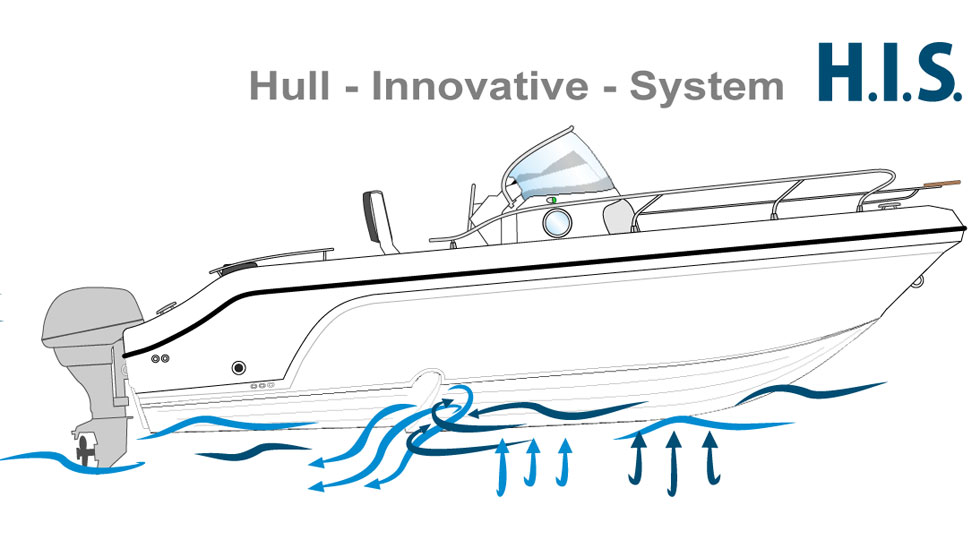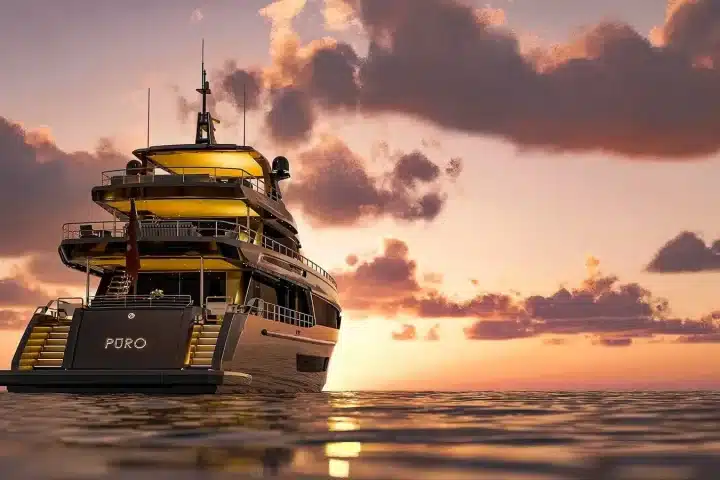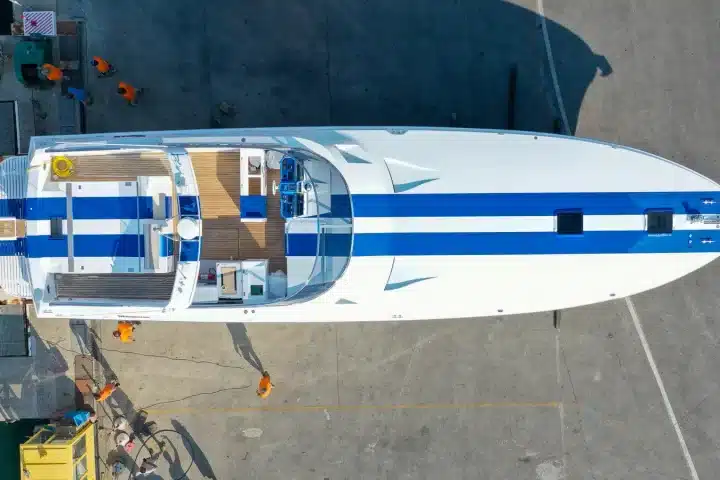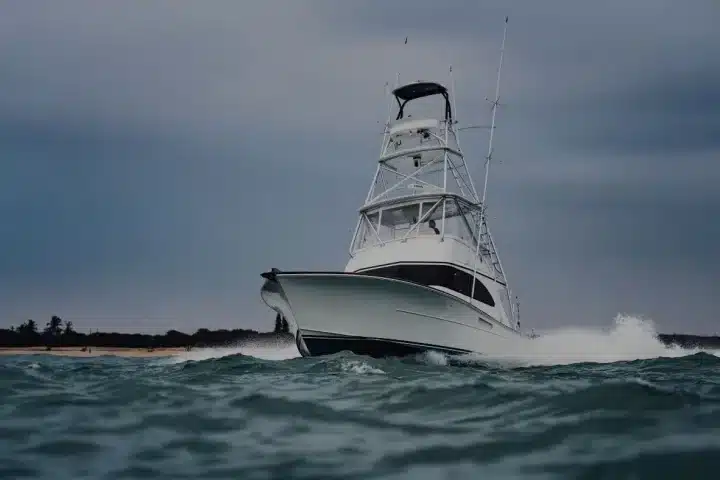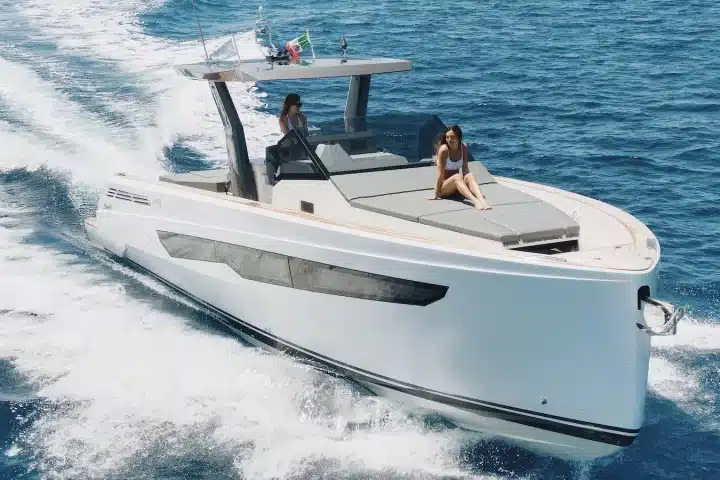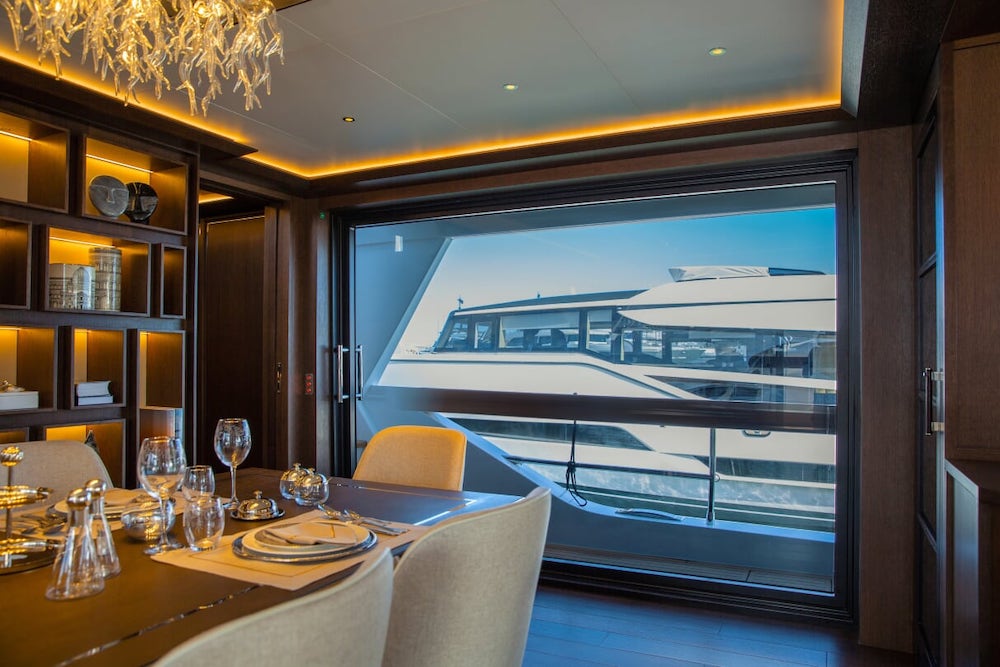The hull steps illustrated by Ranieri International
Hull development has always been an interesting subject area, halfway between maths, fluid dynamics and designers’ genius. But, like all charming subjects, it often provokes conflicting views. Beyond inescapable physical rules, in fact, not everyone agrees about the aptness of this or that hull profile in a specific situation.

This is the background to the Italian boat manufacturer Ranieri International‘s choice to provide the hulls of all its boats, with the exception of ribs, with a “step” (also known as “redan“) which transversally interrupts their lines. The system is called H.I.S (Hull Innovative System) and represents one among the possible modern developments of a principle already used in fields which are close to recreational yachting. The study of seaplane appendages since the ’20s and the development of racing hulls later have heavily encouraged the understanding of a phenomenon that no definitive scientific treatise currently manages to explain.
An ideal “theoretical” hull is a flat plate with a minimum angle of incidence in relation to an ideally calm liquid surface. These conditions produce minimum friction and full power. Equally intuitive is the principle that, the higher the speed used to push an ideal hull is, the greater the resistance of the fluid is.
In reality, of course, boat manufacturers have always tried to find a compromise between hull sections, clearly different from the flat ideal one, “rough” waters and thrust. So, sections progressively adopted a V-shape and deadrise angles sloping towards aft while hulls have been increasingly equipped with chines and steps in order to direct the fluid where they move on and contain resistance.
Designers who have been successful in creating shapes able to divert water and produce less friction (in addition to avoiding pitching and rolling) have seen their hulls prevailing in all competitions.
One among the less obvious insights in fluid dynamics applied to hulls is that one or more steps, placed horizontally to the boat direction, can have positive effects in terms of stability, speed and fuel consumption. However, this is not always true since it doesn’t apply to displacement speed, some types of boats and even planing boats equipped with steps. Nevertheless, under certain conditions, the “step” triggers a virtuous process.
When speed increases, a depression , very similar to that one formed behind the transom, forms just behind the step. But since it is underwater, this depression would certainly produce negative effects on speed if it wasn’t balanced.
Anyway, the wet surface area is reduced a little and fragments into smaller wetted surfaces. As a result, also the buoyancy center moves and produces positive effects on both longitudinal and lateral stability.
However, depression needs to be balanced. Some boat manufacturers have provided their hulls with air inlets (like, for example, Beneteau in the AirStep series). Others, like Ranieri International, have re-designed the step which now opens from the bottom on both its sides in order to avoid any lack of air supply.
Endless possibilities offered by Internet have recently made possible for the phenomenon to be seen and filmed by underwater cameras. Provided that a video can’t replace the information collected by specific hull sensors, it would seem clear that hulls, designed for fast boats and equipped with a “step” similar to that used by Ranieri, act this way.
When the boat is going to reach planing speed (and when this is exceeded), the contact area of water with the hull ( which is continuously wetted at displacement speed) forms a triangular wetted surface forward and two lateral ones aft the step. The central section of the hull is crossed by an air/water mixture coming from the step. Given the different viscosity, resistance in this section should decrease a lot producing significantly positive effects in terms of speed, fuel consumption and stability.
Of course, what has been said must consider the average operating conditions of a boat also because this “system” is rather subject to load distribution aboard. The average Ranieri customer looks for a comfortable, well-designed boat where to enjoy free time and an exciting sailing experience.
From this perspective, Ranieri International is so sure of the quality of its project that it has provided all its boats (with the exception of ribs) with the H.I.S step even if this choice has already resulted in more complex building processes, higher costs and technical troubles.
